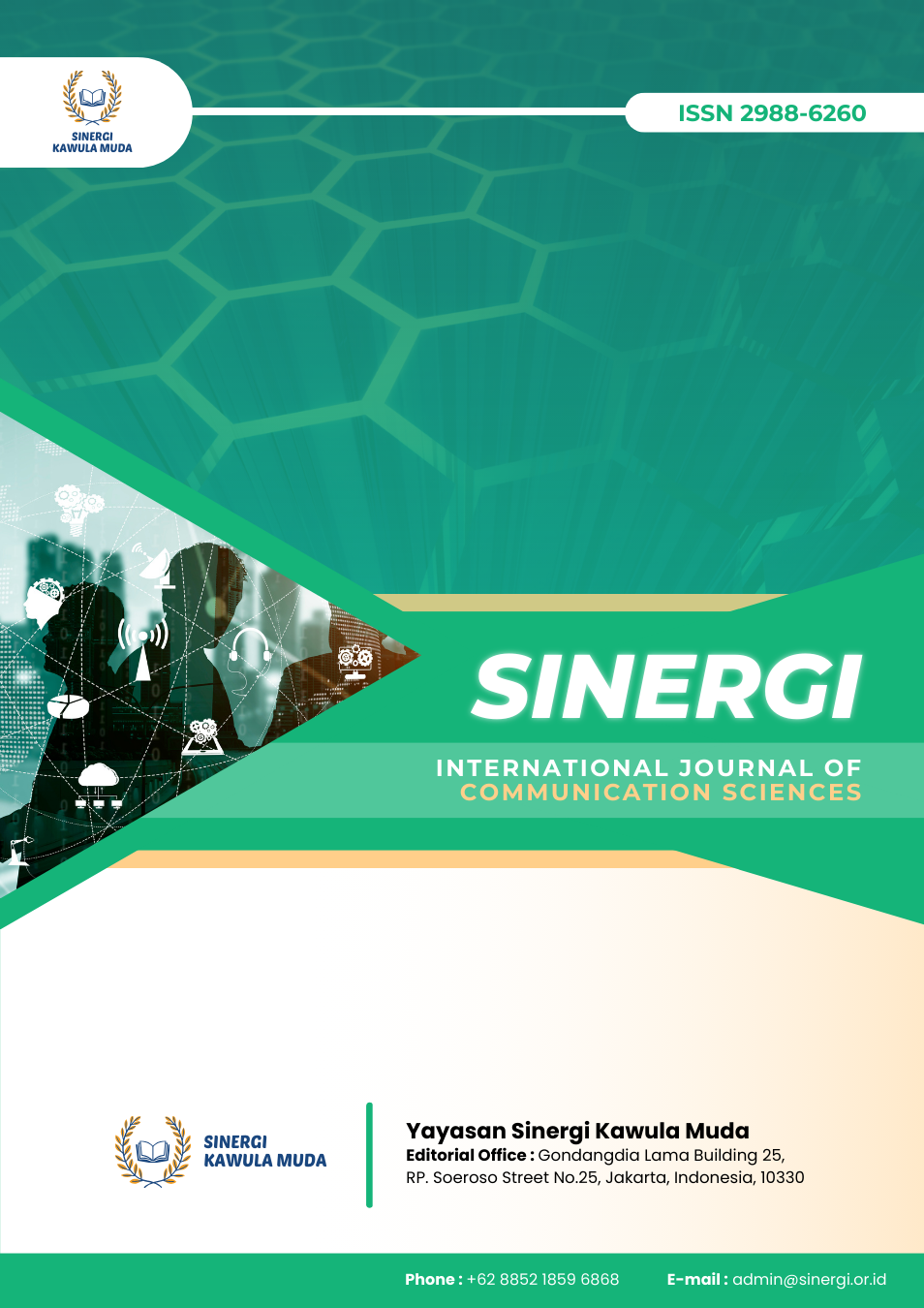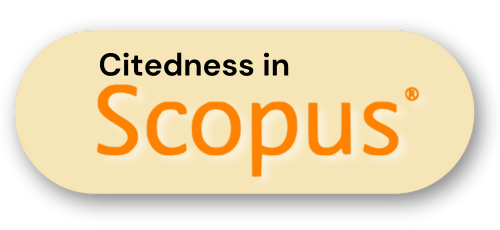Dialogic Communication and Public Trust in Health Emergencies
DOI:
https://doi.org/10.61194/ijcs.v3i1.685Keywords:
Strategic Communication, Crisis Management, Public Trust, Digital Media, Risk Communication, Organizational ResilienceAbstract
This narrative review examines the role of strategic communication in crisis management, focusing particularly on its effectiveness in fostering public trust during the COVID-19 pandemic. The study aims to explore how transparent, responsive, and technology-integrated communication strategies influence collective behavior and institutional legitimacy. Using literature sourced from databases such as Scopus, Web of Science, and PubMed, this review applies thematic analysis to synthesize findings across three dimensions: government public communication, digital media engagement, and internal organizational resilience. The results reveal that governments employing multimodal communication—combining factual messaging, symbolic narratives, and interactive channels—are more successful in promoting compliance and minimizing misinformation. Countries with open, participatory approaches generally report higher levels of public trust compared to those with top-down, controlled messaging. Additionally, media digitalization facilitates real-time feedback, enhances public engagement, and contributes to crisis transparency. However, systemic challenges such as fragmented communication systems, lack of adaptive training, and weak interagency coordination remain prevalent. These findings suggest the need for integrated policy frameworks that emphasize proactive, dialogic, and technologically enhanced communication strategies. Future studies should focus on developing context-specific models that accommodate cultural and institutional nuances. This review underscores that strategic communication is an indispensable pillar of effective crisis management and should be embedded as a fundamental element of public governance systems.
References
Camilleri, M. (2021). Strategic dialogic communication through digital media during covid-19 crisis., 1-18. https://doi.org/10.1108/978-1-80071-264-520211001 DOI: https://doi.org/10.1108/978-1-80071-264-520211001
Cernicova-Bucă, M. and Palea, A. (2021). An appraisal of communication practices demonstrated by romanian district public health authorities at the outbreak of the covid-19 pandemic. Sustainability, 13(5), 2500. https://doi.org/10.3390/su13052500 DOI: https://doi.org/10.3390/su13052500
Chaskar, A. and Upadhyay, S. (2023). Why some hotels get it right and others don't: perspective of situational crisis communication theory towards crisis response strategies. Journal of Contingencies and Crisis Management, 31(4), 954-959. https://doi.org/10.1111/1468-5973.12477 DOI: https://doi.org/10.1111/1468-5973.12477
Dada, S., Ashworth, H., Bewa, M., & Dhatt, R. (2021). Words matter: political and gender analysis of speeches made by heads of government during the covid-19 pandemic. BMJ Global Health, 6(1), e003910. https://doi.org/10.1136/bmjgh-2020-003910 DOI: https://doi.org/10.1136/bmjgh-2020-003910
Fuller, R., Rice, R., & Pyle, A. (2023). U.S. nonprofit organizations respond to the covid-19 crisis: the influence of communication, crisis experiences, crisis management, and organizational characteristics. American Behavioral Scientist, 68(9), 1108-1138. https://doi.org/10.1177/00027642231155380 DOI: https://doi.org/10.1177/00027642231155380
Greenberg, M. (2022). Strategies to be prepared for a risk communication crisis. Risk Analysis, 42(11), 2354-2361. https://doi.org/10.1111/risa.14022 DOI: https://doi.org/10.1111/risa.14022
Hirschfeld, G. and Thielsch, M. (2022). Impact of crisis communication strategies on people’s attitudes toward behavioral guidelines regarding covid-19 and on their trust in local officials. International Journal of Disaster Risk Science, 13(4), 495-506. https://doi.org/10.1007/s13753-022-00424-3 DOI: https://doi.org/10.1007/s13753-022-00424-3
Huang, Z. and Wang, R. (2022). An intermestic approach to china's public diplomacy: a case study of beijing's covid-19 communication in the early stages. Journal of Communication Management, 27(2), 309-328. https://doi.org/10.1108/jcom-04-2022-0042 DOI: https://doi.org/10.1108/JCOM-04-2022-0042
Kabwama, S., Kiwanuka, S., Mapatano, M., Fawole, O., Seck, I., Namale, A., … & Wanyenze, R. (2022). Private sector engagement in the covid-19 response: experiences and lessons from the democratic republic of congo, nigeria, senegal and uganda. Globalization and Health, 18(1). https://doi.org/10.1186/s12992-022-00853-1 DOI: https://doi.org/10.1186/s12992-022-00853-1
Kim, D. and Kreps, G. (2020). An analysis of government communication in the united states during the covid‐19 pandemic: recommendations for effective government health risk communication. World Medical & Health Policy, 12(4), 398-412. https://doi.org/10.1002/wmh3.363 DOI: https://doi.org/10.1002/wmh3.363
Kim, Y. (2021). Building organizational resilience through strategic internal communication and organization–employee relationships. Journal of Applied Communication Research, 49(5), 589-608. https://doi.org/10.1080/00909882.2021.1910856 DOI: https://doi.org/10.1080/00909882.2021.1910856
Kim, Y. and Lim, H. (2020). Activating constructive employee behavioural responses in a crisis: examining the effects of pre‐crisis reputation and crisis communication strategies on employee voice behaviours. Journal of Contingencies and Crisis Management, 28(2), 141-157. https://doi.org/10.1111/1468-5973.12289 DOI: https://doi.org/10.1111/1468-5973.12289
Moreno, Á., Fuentes-Lara, C., Tench, R., & Romenti, S. (2023). Covid-19 communication management in europe: a comparative analysis of the effect of information-seeking in the public’s sense-making in italy, spain and the united kingdom. Corporate Communications an International Journal, 28(5), 744-768. https://doi.org/10.1108/ccij-06-2022-0063 DOI: https://doi.org/10.1108/CCIJ-06-2022-0063
Nour, M. and Kısa, A. (2024). Political leaders’ communication strategies during covid-19 in highly infected countries: a scoping review. Healthcare, 12(6), 607. https://doi.org/10.3390/healthcare12060607 DOI: https://doi.org/10.3390/healthcare12060607
Thakur, R. and Hale, D. (2022). Strategic crisis response: managerial implications and direction for recovery and survival. Journal of Business and Industrial Marketing, 37(10), 1959-1973. https://doi.org/10.1108/jbim-01-2021-0029 DOI: https://doi.org/10.1108/JBIM-01-2021-0029
Voges, T., Jin, Y., Eaddy, L., & Spector, S. (2023). Effective communication management in a public health crisis: lessons learned about covid-19 pandemic through the lens of health communication executives. Journal of Communication Management, 27(1), 64-83. https://doi.org/10.1108/jcom-12-2021-0137 DOI: https://doi.org/10.1108/JCOM-12-2021-0137
Adamu, A., Raza, S., & Mohamad, B. (2024). Unpacking the behavioural outcomes of internal crisis communication: underlining nexus of employee task performance, crisis responsibility and work well‐being to improve organizational reputation. Journal of Contingencies and Crisis Management, 32(2). https://doi.org/10.1111/1468-5973.12562 DOI: https://doi.org/10.1111/1468-5973.12562
Biernacka-Ligięza, I. (2021). The significance of digital media in local public space crisis management: the case of poland, the united kingdom and italy. Journal of Arab & Muslim Media Research, 14(1), 47-70. https://doi.org/10.1386/jammr_00024_1 DOI: https://doi.org/10.1386/jammr_00024_1
Chen, Q., Zhang, Y., & Evans, R. (2024). Local government social media use, citizen satisfaction, and citizen compliance: evidence from the covid-19 outbreak in shanghai. International Journal of Disaster Risk Reduction, 101, 104238. https://doi.org/10.1016/j.ijdrr.2023.104238 DOI: https://doi.org/10.1016/j.ijdrr.2023.104238
Zerfaß, A. and Viertmann, C. (2017). Creating business value through corporate communication. Journal of Communication Management, 21(1), 68-81. https://doi.org/10.1108/jcom-07-2016-0059 DOI: https://doi.org/10.1108/JCOM-07-2016-0059
Downloads
Published
Issue
Section
License
Copyright (c) 2025 Rachmat Hidayat

This work is licensed under a Creative Commons Attribution 4.0 International License.





